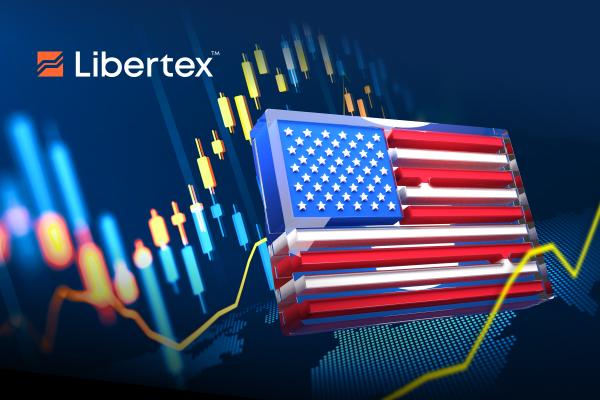The post-pandemic period has been a marathon of ups and downs for the US stock market. However, since early 2023, the S&P 500 and Nasdaq 100 have been enjoying seemingly steady and stable growth. Indeed, since January 2023, both of these key US indices have gained 38% and 69% respectively. This looks great at first glance, but when we zoom in on 2024, we see a worrying picture. Since January 2024, the S&P 500 and Nasdaq 100 have only managed to record growth of 11% and 12%, respectively. Of course, we can't expect the market to rise constantly without even the slightest correction. However, when we look at the wider macroeconomic context, there are several causes for concern.
It looks like investors are gradually moving towards the sidelines on account of factors such as slowing economic growth, a softening labour market, and rising core inflation. The combination of these phenomena is typically referred to as a "stagflation" scenario and has historically been bad for equities. In addition to this, earnings forecasts are looking weaker, and global insecurity continues to rise, including a totally unpredictable US presidential election in November. But what does this all mean for US stock prices up until the end of the year, and what are the main factors investors should be aware of going into Q3?
FED up of stag-waiting
Back in Q4 2023, when inflation was within touching distance of the US Federal Reserve's 2% target rate, talk of multiple rate cuts in 2024 began to emerge. Even Jerome Powell seemed to be hinting at the possibility in his early 2024 post-meeting comments. The result of this was vigorous and sustained growth for both the S&P 500 and Nasdaq 100, which peaked in late March at more or less their current levels. As it gradually became clear that the Fed had perhaps overestimated the effectiveness of its monetary policy, a sharp decline of over 5% followed in early April.
The reason for this was that the market had already priced in multiple rate cuts, with the first of these initially expected to come by May. And with the expected date continuing to be pushed back further and further, the market has thus far been unable to find sufficient stimulus to push on to new highs. The overwhelming consensus on the fixed-income markets seems to be that the first cut will now come in September. However, if this fails to materialise or the date is pushed back further, we should expect further declines in US stocks. Some data suggests that there is still a 15% chance of no cuts at all in 2024. We would be wise to watch for any signs of a weakening labour market in upcoming FOMC meetings since Powell has stated numerous times that this would be the main factor that would prompt him to lower rates.
Waning confidence
Despite the strong labour market and general strength of the US economy, consumer confidence has been quietly declining month after month. Indeed, April's figures show that the indicator hit its lowest since July 2022, when inflation was in double digits. As Chief Economist at the Conference Board Dana M. Peterson said at the time of the release, "consumers [have become] less positive about the current labour market situation more concerned about future business conditions, job availability, and income." At the same time, a GlobalData report reveals that 51.5% of US consumers plan to cut back on retail spending over the remainder of 2024. In fact, 34.1% of shoppers reported having purchased second-hand clothes this year so far.
Obviously, these numbers are not disastrous, but they do present a risk for already weaker-than-forecast corporate earnings in Q2 and beyond. Nevertheless, Petersen concluded that "despite April's dip in the overall index, since mid-2022, optimism about the present situation continues to more than offset concerns about the future." Still, any sign of a slide by the so-called Magnificent Seven stocks, such as Nvidia, Apple, or Tesla — which have been responsible for the lion's share of the major indices' growth this year — may lead to an exodus of capital from both Main Street and Wall Street. As a barometer of the health of corporate America's finances, failure to meet earnings expectations or weaker-than-expected guidance would likely prompt a fall in the individual stocks and a knock-on effect on the S&P 500 and Nasdaq 100.
Trade CFDs on stocks, indices, and more with Libertex
Offering a wide range of CFDs in a wide variety of underlying asset classes, including metals, currencies, and crypto, through to ETFs, simple equities, and, of course, indices, with Libertex, you trade the underlying assets of your choice. Beyond major indices like the S&P 500 and Nasdaq 100, Libertex provides both long and short positions on a whole host of individual tickers, including Magnificent Seven stalwarts Apple, Nvidia, and Tesla. What's more, Libertex empowers you to trade with or without leverage on its multi-award-winning app. For more information or to create an account today, visit www.libertex.com/signup


